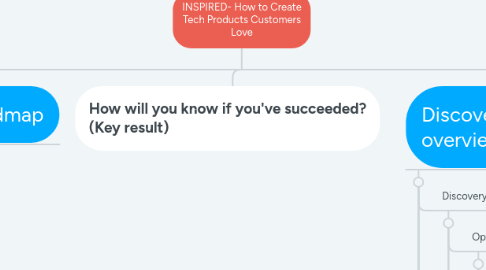
1. Product manager
1.1. Key 1: Responsibilities
1.1.1. When a product succeeds, it’s because everyone on the on the team did what they needed to do. But when a product fails, it's the product manager's fault
1.2. Key 2: Deep Knowledge of the Customer
1.2.1. Their issue, pain, desire, how they think - for the product business: how they work, how they decide buy
1.2.1.1. Qualitative
1.2.1.1.1. Understand why our users and customers behave the way they do
1.2.1.2. Quantitative
1.2.1.2.1. Understand what they do
1.3. Key 3: Deep Knowledge of the Data
1.3.1. What they're doing with product
1.4. Key 4: Deep Knowledge of your business
1.4.1. Successful products are not only loved by your customers, but they work for your business
1.5. Key 5: Deep Knowledge the market & Industry
1.5.1. This includes not only competitors but also key trend technology, customer behavior and expectations, following the relevant industry analysts, and understanding the role of social media for your market & customers.
1.5.2. We must create products for where the market will be tomorrow, not where it was yesterday
1.6. Key 6: Smart, Creative, and Persistent
1.6.1. Smart: Quickly learning and apply new technologies to solve problems for customer, to reach new audiences or enable new business models.
1.6.2. Creative: Thinking outside the normal product box of features to solve business problems.
2. Product Design
2.1. In the old model, designer took requirements or specifications from Product manager and use that to create their design. In contras, modern product designer continuously collaborate with product manager and engineers - from discovery to delivery.
2.2. Question: . How will customer first learn about product? . How will we onboard a first-time user and (perhaps gradually (reveal new functionality? . How might user interact at different time during their day? . What other things are competing for user's attention? . How might thing be different for a one-month-old customer versus a one-year-old customer? . How will we motivate a user to higher level of commitment to the product? . How will we create moments of gratification? . How will user share his experience with other? . How will customers receive an offline service? . What is the perceived responsiveness of the product?
3. Product Roadmap
3.1. As a prioritized list of features and projects your team has been asked to work on
3.2. Business context
3.2.1. The product vision & Strategy
3.2.2. Business objectives
4. Product vision
4.1. Describes the future we are trying to create, typically somewhere between two and five years out.
4.2. It's primary purpose is to communicate this vision and inspire the teams to want to help make this vision a reality.
5. Product Strategy
5.1. Our sequence of products or releases we plan to deliver on the path to realizing the product vision.
5.2. Business-focused company: Product/market fit focus on a different vertical market.
5.3. Consumer-focused company: Product/market fit around a difference customer or user persona.
6. Principe of Product vision
6.1. 1. Start with Why
6.2. 2. Fall in love with the problem, not with the solution.
6.3. 3. Don't be afraid to think big with vision.
6.4. 4. Don't be afraid to disrupt yourselves because, if you don't, someone else will.
6.5. 5. The product vision need to inspire
6.6. 6. Determine and embrace relevant meaningful trend
6.7. 7. Stake to where the puck s heading, not to where it was.
6.8. 8. Be stubborn on vision but flexible on the detail.
6.9. 10. Evangelize continuously and relentlessly.
6.9.1. 9. Realize that any product vision is a leap of faith.
7. Principle Product Discovery
7.1. Purpose
7.1.1. Will the customer buy this, or choose to user it (value risk)
7.1.2. Can the user figure out how to use it? (Usability risk)
7.1.3. Can we build it? (Feasibility risk)
7.1.4. Does this solution work for our business? (Business viability risk)
7.2. Customer don't know what's possible, and with technology products, none of us know what we really want until we actually see it
7.3. The most important thing is to know what you can't know
7.4. Our goal in discovery is to validate our ideas the fastest, cheapest, way posisible
7.5. Validate everything during discovery not after
8. Discovery techniques overview
8.1. Discovery Framing
8.1.1. Opportunity assessment
8.1.1.1. What business objective is this work intended to address? (Objective)
8.1.1.2. What problem will this solve for our customers? (Customer problems)
8.1.1.3. What type of customer are we focused on? (Target market)
8.1.2. Customer letter
8.1.3. Startup Canvas
8.2. Discovery Planning
8.3. Discovery ideation
8.4. Discovery Prototype
8.5. Discovery Testing
8.5.1. Feasbility
8.5.2. Usability
8.5.3. Value
8.5.4. Business Viability
